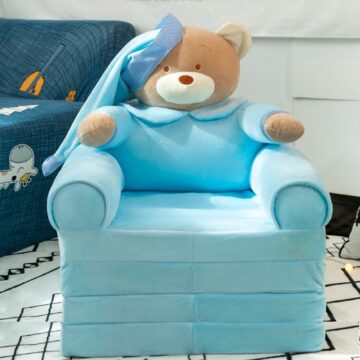While most families eagerly await the beautiful spring weather, some view the change with trepidation. One season is preferred by all more than the others. Which one do you like? Like you, many of our children struggle to put away winter gear and pull out summer stuff.
Why? Changing your wardrobe from season to the season may be challenging for those with sensory processing disorder. Moving from long to short sleeves or slacks to shorts causes stress and anxiety in many kids. You are not alone if your youngster is not dressed adequately for the weather outside. According to the Sensory Processing Disorder Foundation, one in twenty kids may have a sensory processing disorder. In every location, sensory dysfunctions might happen (or any sense). Skin receptors may be impacted by sensory disorders since the skin is the biggest organ in the human body.
Think about the weight and various garment textures. Winter jackets and sweaters weigh more and provide our bodies’ receptors with much more “input” than a thin cotton t-shirt. In actuality, our bulky winter gear gives us a feeling of weight, pressure, and touch sensation. The sense of light touch is actually described as “painful and like nails on a chalkboard” by some children and people with SPD. We may also feel the breeze on our skin when we are wearing shorts or t-shirts, which can likewise feel “light,” “painful,” and “tickly.”
Hooded sweatshirts are popular among kids and adults because they have a smooth texture and a great hood to help reduce the feelings that might bombard our bodies.
What can I do to encourage my child to wear weather-appropriate clothing?
Winter Clothing
I constantly get asked this question, and it changes with the seasons. In fact, I wrote a whole chapter of my first book about teaching kids to endure being dressed, taking a bath, and getting their hair and nails trimmed. REMEMBER, YOU ARE NOT ALONE! Numerous families are experiencing the same problem and are just frustrated as you are!
1) Let your youngster know that the seasons will soon change. Tell him that some days will be warmer than others and that this is to be expected. Mark the seasons or dates on the calendar that corresponds to your location’s usual weather variations for him.
2) Allow her to help you search his drawers to find any items he might have outgrown since last summer. Let him pick the clothing he will most likely wear when it’s warm by feeling the texture, viewing the colour, and so on. Allow him to accompany you when you buy so that he may have a say in what summer clothes are chosen.
3) Give her everyday options for two different clothes. Giving him influence over his attire might help him feel more in control of the situation. Of course, you may choose in advance which two options you will provide to guarantee that the attire is suitable for the day’s weather.
4) Discover his preferred style of attire by asking him. Textures, buttons, seams, and zippers are essential for kids with SPD. Youngsters could feel uneasy and anxious when they are on a shirt. For instance, my kid steadfastly refused to wear any shirts with designs two summers ago. We consequently bought t-shirts in all plain hues. He did nicely with the basic tees! When we looked through his drawers the following summer, he started to weep and display indications of extreme fear. It’s like playing detective when we notice that he changed a year later and only wore shirts with stripes.
5) Allow her to practice before he is required to wear outside attire. Give her a day and time when she should wear the clothes. Let’s use shorts as an illustration. “We’re going to practice wearing our shorts on Saturday. They need to be worn for an hour. Extend the period he wears the clothes This is hard work, so be sure to give lots of support and praise!
Making him wear clothes he does not want to wear is the worst thing you can do. How would you feel if someone forced you to wear an itchy wool sweater? Pick your fights. Sometimes having a child who genuinely matches rather than one who matches exactly is preferable.
















